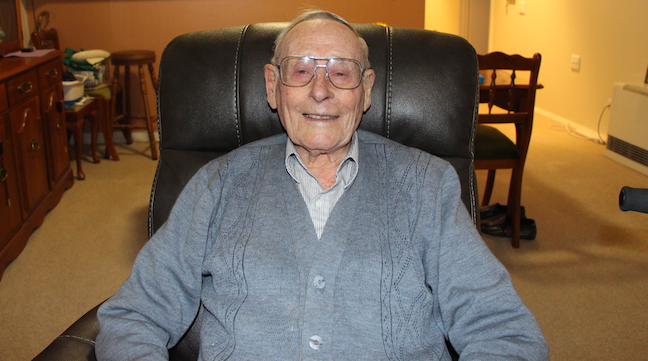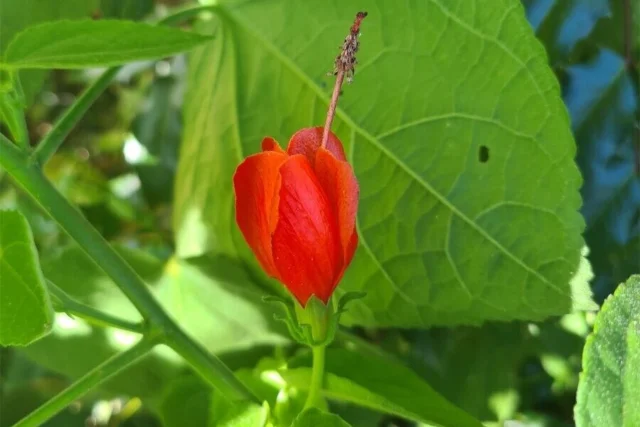
VIVID memories of the siege of Tobruk have stayed with World War II veteran and ACT Rat of Tobruk John Fleming.
The 101-year-old recalls living in a hole he dug out with two others, deep enough that they could crawl about inside, but with ledges on the sides where they could lie, knowing they could get buried alive at any time.
“Once you were covered, if you lost air you were gone, you know,” he says.
“One place we were in, two blokes lay in a gully and there was an attack where they were lying, that’s how we lost them. They lost their breath. We dug them out, hoping it was quick enough, but it was too late. Doesn’t take long to kill someone’s breath.”
April 2021 will mark the 80th anniversary of the siege, with planning in the works for a “world reunion” of veterans and descendants in Brisbane.
Commemorative roses have been planted in Eddison Park, Woden by the Descendants of the Rats of Tobruk Association, so the flowers will be in bloom in time for the anniversary.
Vicki Munday, representative of the Association, said the “No Surrender” roses, developed by Treloar Roses, Victoria, are “blood-red and sandy gold”, and the intention had been to plant them across all states at the same time, exactly a year before the anniversary on April 10.
“COVID-19 put a stop to that idea, and now each state is doing its own thing, but we’ve got ours planted at the Eddison Park war memorial obelisk and we’ll put a plaque there on the anniversary,” she says.
The Siege of Tobruk started on April 10, 1941, when 14,000 Australians defending the Libyan town of Tobruk were surrounded by a German-Italian army commanded by Gen Erwin Rommel, in a siege that would last eight months until October 25, facing tank attacks, artillery barrages and daily bombings, living in dug-outs, caves and crevasses. In that time, 749 were killed, 1996 wounded and 604 were taken prisoners of war.
Vicki’s late grandfather, Rat of Tobruk Clem Semmens, from SA, was a quartermaster and staff sergeant, and she says the group, active on Facebook, believes there are around 30 Rats still living in Australia, with two they’re aware of in the ACT: 96-year-old Derek Holyoake, who helped to plant the roses in early July, and John, who now lives in Bruce and celebrated his 101st birthday on June 29.
John was born in Scotland in 1919, emigrated to Australia with his parents four years later, and grew up on a dairy farm in Rocky Hall, NSW. A dispatch rider with 9th Division Signals, John says his country upbringing seemed to have given him a decent sense of direction, and in Tobruk, which he describes as “pretty busy” he’d often be sent out to find people who had lost their way.
“What I used to say to them was don’t do anything, just stay where you are, if you start running about I’ll never find you,” he says.
“It could be difficult to remember where to go, it was flat desert, so they’d wait ’til I’d catch up with them.”
John says he wasn’t injured in Tobruk, but was shot “about 11 days in” to the New Guinea campaign, when his army career ended and he became a postmaster.
“My wife Mary was glad when I was back in the hospital in Australia, we’d only just got married when I got home from the Middle East. I didn’t want to marry her before that in case I got knocked off,” he says.
The couple went on to have three children and many grandchildren and great-grandchildren. John says Mary passed away at 92 “when she was ready”, but he plans to keep on going.
“I seem to just go on and on, but I do want to keep living,” he says.
“I think the army started that sort of thing, if you’re in the army you just have to keep living. It sort of grows into you.”
Who can be trusted?
In a world of spin and confusion, there’s never been a more important time to support independent journalism in Canberra.
If you trust our work online and want to enforce the power of independent voices, I invite you to make a small contribution.
Every dollar of support is invested back into our journalism to help keep citynews.com.au strong and free.
Thank you,
Ian Meikle, editor








Leave a Reply